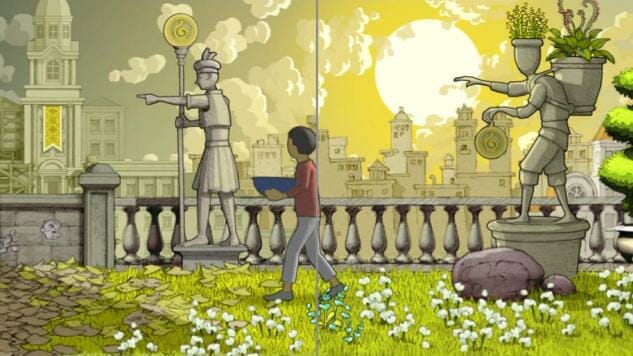On the Byzantine Art of Gorogoa

Recently I was enchanted by the puzzle game Gorogoa, the debut effort of a single designer and illustrator, Jason Roberts. Released late this month after seven years of development, the game features an intriguing use of space and a surreal, almost philosophical, relationship between object and objective, not to mention several beautifully illustrated and hand drawn panels that are arguably its biggest draw.
As I played Gorogoa I was struck by how much the visual style seemed reminiscent of key elements in the art and architecture of Byzantium, the Greek colony-turned-empire synonymous with Constantinople, the cultural capital and epicenter of Christianity in Europe for over 900 years (known today as Istanbul, Turkey). It reminded me particularly of the early and middle periods of the empire’s history, from domed buildings with their grand symmetrical spires, to elegant relief carvings and icon-like character designs. Certain as to its influence on the look and themes of Gorogoa and curious as to the extent, I reached out to Roberts to ask a few questions to get some insight on how it all came together, and he shed some light via email.
As it turns out, any impression of deliberation was a bit of an assumption on my part, but not entirely wrong. While Roberts did not intentionally aspire or to seek to mimic Byzantine art, there were nonetheless some sources of inspiration that had a natural overlap. He told me by email, “I wasn’t specifically representing Byzantine architecture, but I’ve traveled to Istanbul and the Hagia Sophia as well as other structures did make a lasting impression on me. I used many images as reference material, including Byzantine religious icons. I wanted to suggest a world with a history parallel to but different than ours. The flat graphic style of those old images makes them paradoxically more tempting to explore as 3D spaces. They can be very ornate and yet still represent a kind of innocence, qualities that signify piety and fit with the themes of the game.”